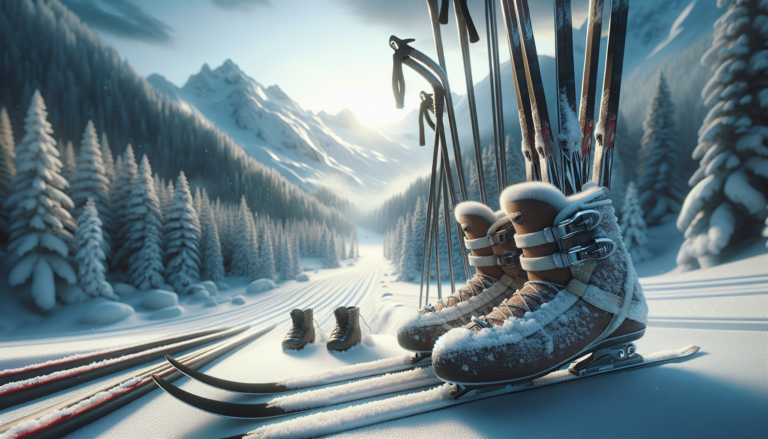Introduction to Cross-Country Skiing
Cross-country skiing is a fantastic winter sport that allows you to explore beautiful snowy landscapes while getting a great workout. It’s an accessible activity for beginners, with a relatively short learning curve compared to downhill skiing. In this guide, we’ll cover everything you need to know to get started with cross-country skiing, including equipment, techniques, safety, and where to find the best trails.
What is Cross-Country Skiing?
Cross-country skiing involves gliding across snow-covered terrain using long, narrow skis and poles. Unlike downhill skiing, cross-country skiing emphasizes traveling across flat or rolling landscapes rather than speeding down steep slopes. It’s a low-impact, full-body workout that builds endurance, strength, and cardiovascular fitness.
Benefits of Cross-Country Skiing
There are many great reasons to try cross-country skiing:
- It’s an excellent cardio workout that engages all major muscle groups
- Skiing is easy on the joints compared to high-impact sports like running
- You can enjoy beautiful winter scenery and get a dose of fresh air
- It’s relatively inexpensive compared to downhill skiing
- You can ski at your own pace, making it ideal for all fitness levels
Types of Cross-Country Skiing
There are two main styles of cross-country skiing: classic and skate skiing. As a beginner, you’ll likely start with classic skiing.
Classic Cross-Country Skiing
Classic skiing is the traditional style of cross-country skiing. It involves gliding straight ahead in parallel tracks groomed into the snow. You move forward using a “kick and glide” motion, pushing off with one ski while gliding on the other. Classic skiing is ideal for beginners because it’s easier to learn and works well on a variety of terrain.
Skate Skiing
Skate skiing is a newer, faster-paced style of cross-country skiing. Similar to ice skating, skate skiing involves pushing off from side to side with your skis pointing outwards in a “V” shape. It requires more balance and coordination than classic skiing. While it’s not the best place for beginners to start, you can work up to skate skiing as your skills improve.
Essential Gear for Cross-Country Skiing
To get started with cross-country skiing, you’ll need some essential equipment:
Skis, Boots, and Poles
Cross-country skis are long, narrow, and lightweight compared to downhill skis. For classic skiing, choose skis that reach your wrist when your arm is raised overhead. Cross-country ski boots are flexible and attach to the skis only at the toes. Poles should reach from the ground to your armpits.
Clothing and Accessories
Dress in layers with moisture-wicking base layers, an insulating mid-layer, and a waterproof/windproof outer shell. Avoid cotton, which stays wet and draws heat away from your body. Other essentials include:
- Warm, moisture-wicking hat or headband
- Ski gloves or mittens
- Neck warmer or balaclava
- Wool or synthetic ski socks
- Ski goggles for windy or snowy conditions
Basic Techniques for Cross-Country Skiing
Learning proper technique will help you glide efficiently and avoid tiring yourself out. Here are some key concepts:
Balanced Stance and Weight Transfer
Maintain a slight bend in your knees and hips, with your weight evenly distributed between your skis. As you glide, shift your weight fully onto your gliding ski, allowing the other ski to glide easily alongside. Keep your hips facing forward and avoid twisting your torso.
Arm-Leg Coordination
Just like when walking or running, your arms and legs should swing in opposition. As you kick off with your right ski, swing your left arm forward, and vice versa. Establishing this rhythm will help you maintain your balance and forward momentum.
Diagonal Stride (Classic Skiing)
The diagonal stride is the fundamental technique used in classic skiing. From your balanced stance, push off with one leg to propel yourself forward while keeping your other ski parallel and weighted. As you glide, swing your arms forward and back in opposition. Alternate legs in a walking or marching motion.
Learning to Cross-Country Ski
There are a few different ways you can go about learning to cross-country ski as a beginner:
Taking Lessons
The best way to learn good technique and stay safe is to take a lesson from a certified instructor. Many cross-country ski areas offer group or private lessons for beginners. In a lesson, you’ll learn the basics of balance, gliding, and turning. Your instructor will also go over safety and trail etiquette.
Self-Teaching Tips
If you want to try teaching yourself, here are some tips:
- Start on flat, open terrain away from obstacles
- Focus first on shifting your weight and keeping your skis parallel
- Practice the diagonal stride at a slow pace, focusing on the kick and glide
- Once you’re comfortable balancing and gliding, practice gentle turns by shifting your weight in the direction you want to go
Online Resources and Videos
There are many great online resources for learning cross-country skiing. YouTube has a wealth of free instructional videos demonstrating technique for both classic and skate skiing. Some notable instructors like Greg Rhodes from the Professional Ski Instructors of America (PSIA) have comprehensive beginner videos. You can also find helpful articles on sites like REI that cover everything from gear to trail etiquette.
Safety and Etiquette in Cross-Country Skiing
Whenever you’re skiing, it’s important to stay safe and be a responsible trail user. Here are some key considerations:
Staying Warm and Avoiding Overheating
Dressing in non-cotton layers allows you to regulate your temperature by adding or removing layers as needed. Start a little bit cold, since you’ll quickly warm up once you start moving. On the flip side, if you get too warm, open your jacket or take off your hat to avoid sweating too much, which will make you cold.
Skiing in Low-Risk Areas
As a beginner, stick to groomed trails that are frequently used and maintained by resorts or recreation areas. Avoid backcountry skiing, which requires avalanche knowledge and safety equipment. Also steer clear of thin ice or rocky areas.
Trail Etiquette
On shared-use trails, always yield to downhill skiers who have less control over their speed. When stopped, step to the side of the trail to let others pass. If you fall, fill in your divot to avoid creating a hazard. Pack out any trash with you.
Finding Cross-Country Ski Trails
Once you have your gear and some basic skills, you’ll be eager to hit the trails! Some options for finding great beginner-friendly terrain include:
Groomed Trails
Many Nordic centers and public parks groom trails specifically for cross-country skiing. These trails will be machine-smoothed and have parallel tracks set for classic skiing. Trail difficulty is typically marked like downhill ski runs – green circles are the easiest, progressing up to black diamonds.
Cross-Country Ski Resorts
Going to a dedicated cross-country ski resort is a great way to find suitable trails and enjoy other amenities like rentals, lessons, and warming huts. Many downhill ski resorts also have groomed cross-country trails. An online search or sites like cross-countryski.com can help you find resorts near you.
Conclusion
Recap of Key Points
You now have all the essential info you need to start your cross-country skiing journey:
- The two main styles are classic and skate skiing
- Essential gear includes skis, boots, poles, and layered clothing
- Key techniques are maintaining balance, transferring weight, and coordinating arm-leg movements
- You can learn through lessons, self-teaching, and instructional videos
- Always prioritize safety and proper trail etiquette
Encouragement to Get Started
Cross-country skiing is a wonderful way to stay active and enjoy the outdoors through the winter months. While it takes some practice, it’s a very beginner-friendly sport. With the right gear, a positive attitude, and maybe a lesson or two, you’ll be gliding across the trails in no time! So get out there, embrace the learning curve, and most importantly – have fun. See you on the trails!






